Inside a Mexican Farmer's Market
The closest greenmarket, in Etla, Oaxaca, never ceases to amaze
One of the most stressful tasks I’ve had since moving has been going to the weekly farmer’s market in Etla. It’s also one of my favorite things about living here.
Farmer’s markets take on an almost religious importance for people who are in tune with seasonal produce, and I am decidedly one of those pilgrims. When we lived in New York I knew which month heralded the arrival of ramps, a type of wild garlic with an incredibly short window of availability. I know how to identify when fava beans are in good condition. I knew which vendors at the Union Square Greenmarket had tasty and inexpensive beefsteak tomatoes, and which had delicious but very expensive heirloom tomatoes, and which would sell bruised and overripe tomato seconds for pennies on the dollar (perfect for making gazpacho). I knew who to go to for tender herbs, freshly laid eggs, and we had a favorite baker and knew which bakers to avoid. It’s not in my nature to be a morning person, but I’d rise bright and early before the morning chill had even burned off and we’d eat tomatoes, bread, and mayo for the entire length of the summer. So the idea that Oaxaca, a place where tomatoes are never not in season, would offer that kind of experience every single week of the year was incredibly compelling.
The Etla market is a sprawling network of stands and vendors which pops up every Wednesday around a large, permanent market building. I visited the market during our very first trip to Oaxaca as a part of an all-day cooking class with Seasons of my Heart, a cooking school run by chef Susana Trilling. It was exactly the kind of experience one might hope for, an assisted look into a market selling a huge assortment of herbs, chiles, coffee, vegetables, meats, prepared foods like carnitas (fried pork) and tacos, and also plants, cooking pots, clothing and belts, machetes, plastic toys (and toys hand-carved or hand-woven), and much more besides.
There was also initially an element of exoticism in my head when it came to the Etla market. For sure, most of the vegetables being sold were varieties people would readily recognize, but Oaxaca also offers its own heritage peppers and herbs, as well as vegetables common to Mexico which you wouldn’t easily find elsewhere. I was also lured in by the semi-ridiculous, totally stereotypical idea of a market in another country, for which I can blame/thank my parents, who spent my entire childhood talking breathlessly (but deservedly) about the greatness of outdoor markets in France and Italy.
The Etla market is an intense experience, and that intensity changes depending on both the time of day and the time of the year. But no matter what, it’s a guarantee you’ll be faced with an enormous assortment of products of varying quality.
I could describe the market endlessly and talk about the narrow alleyways you must navigate to find our favorite coffee vendor, and about the crumbling stone steps on which people sell herbs and pieces of resinous fatwood for starting fires. But the mercado de Etla is such a wonderful experience it feels worthwhile to actually show what it looks like.
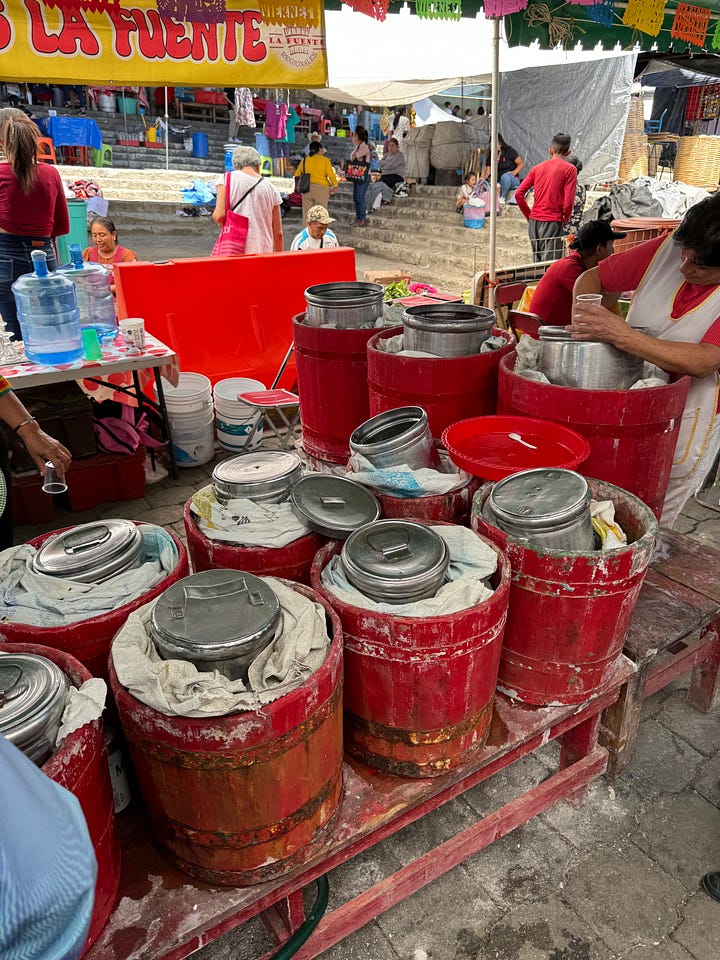
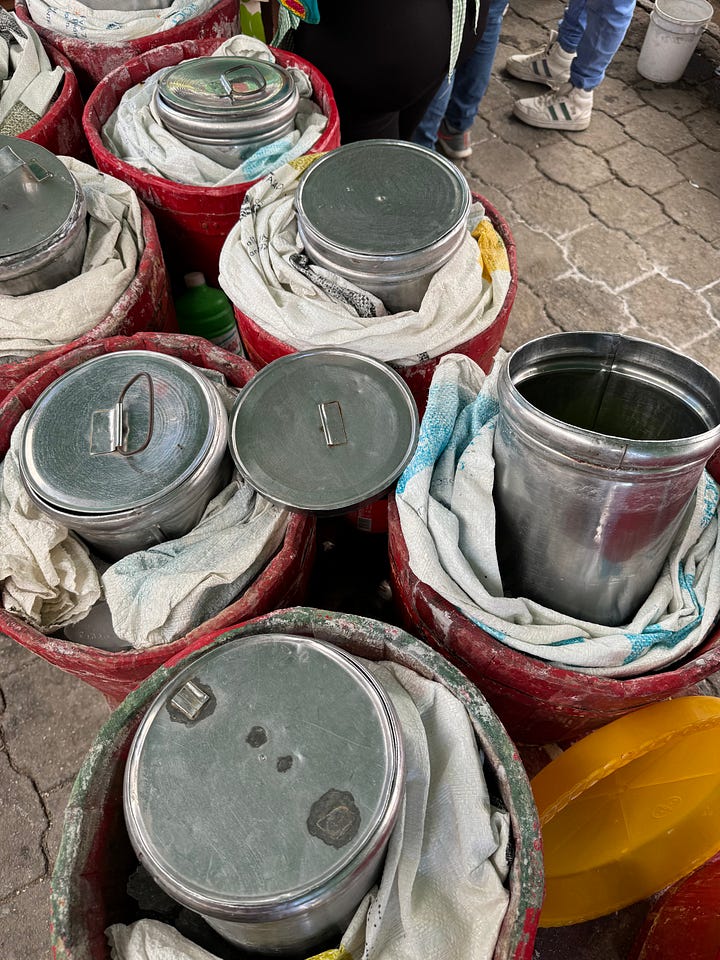
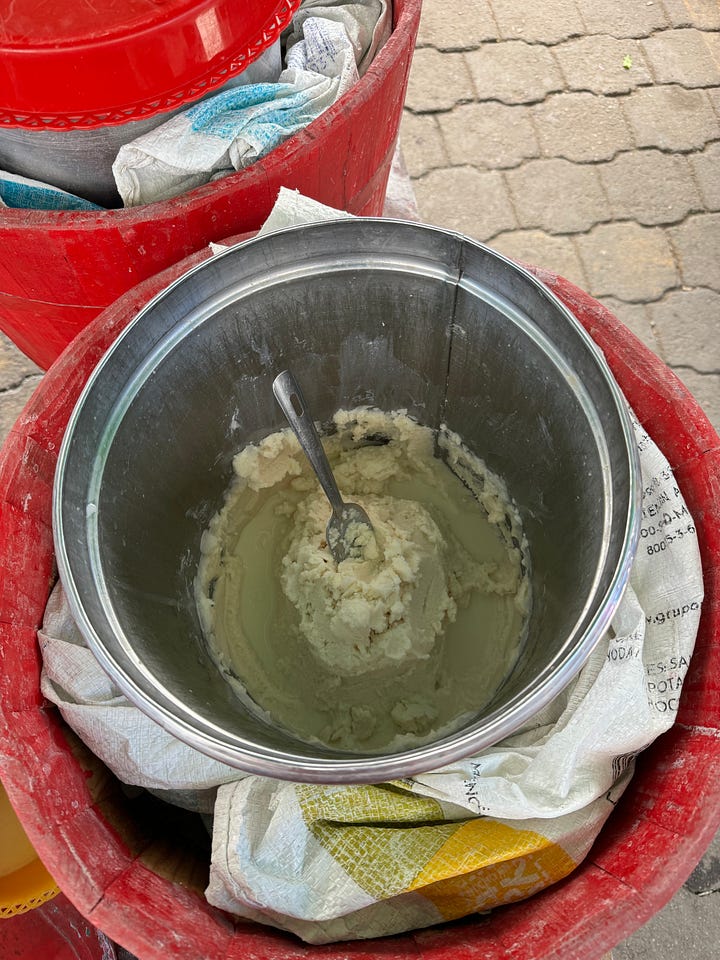

Now that the weather is particularly hot I’m seeing more space being dedicated to stalls selling nieve de garrafa, which is basically a type of Mexican sorbet. Narrow metal canisters are filled with a mix of juice, fruit, flavoring, dye, and in some cases milk, and then placed into wooden buckets filled with water and ice. The canisters are spun rapidly at regular intervals until someone comes along and places an order, at which point the frosty slush inside is scooped out. The small size I purchased (lemon flavored!) cost 30 pesos (around $1.70) but if you order larger sizes to stay they come in American ice cream parlor-style glasses.
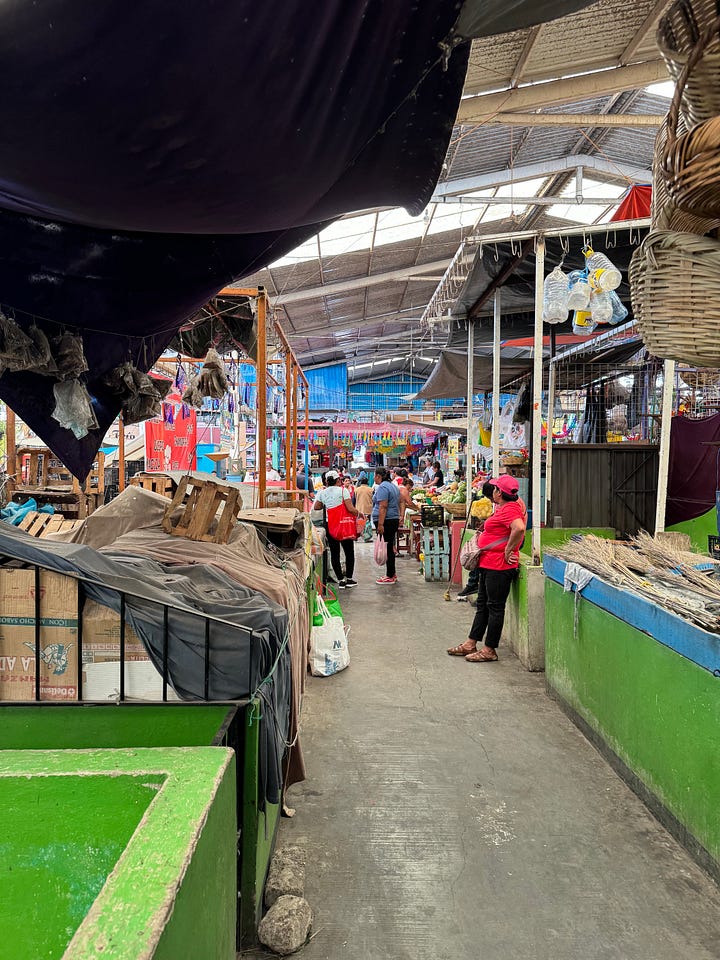

The interior of the market is significantly less vibrant than the stalls set up along the exterior. It's also where you would buy meat, which isn’t pictured here because it’s so busy I feel a little too gringo-y taking photos.



Foraged ingredients vary in quality but the selection is quite interesting. This week marked the first time I’ve ever seen bundles of juniper, but based on the coarseness of the needles, the size of the berries, and the lack of fragrance I think they’re overly mature. More commonly available is ginger (jengibre), turmeric (cúrcuma), long scrolls of cinnamon (canela), and small heads of garlic (ajo, which I think people find growing wild and then dry in their homes). Insects are also a very traditional and popular ingredient in Oaxaca, with the most common being chapulines (grasshoppers). Chapulines are dry roasted and salted and typically eaten as a snack, or served on top of dishes like guacamole. For an extremely limited time during the onset of the rainy season you can find chicatana ants. Also available are gusanos (worms) taken from agave plants. They’re basically grubs, which get roasted and most often ground up and added to salt. That salty worm powder is served alongside shots of mezcal.
Depending on the level of poverty of the seller, and how desperate they are, it can also be a high pressure sales environment. People with more money will have large, sprawling stands which always appear in the same spot. People with less money and resources will have no stand at all, either standing in place with a wicker basket filled with whatever they were able to forage that week, or just walking from person to person holding up what they’ve grown or foraged that week.
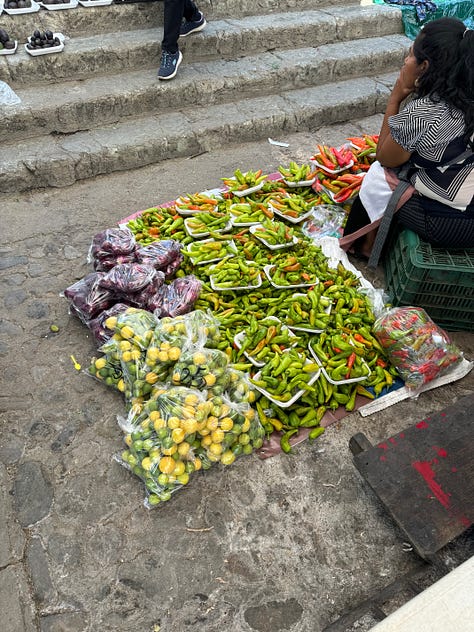



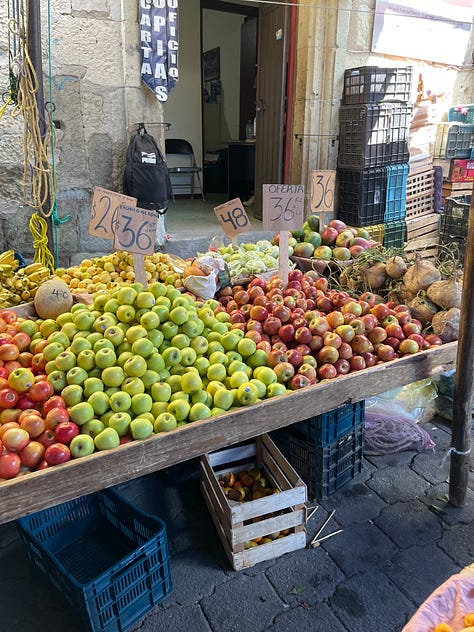
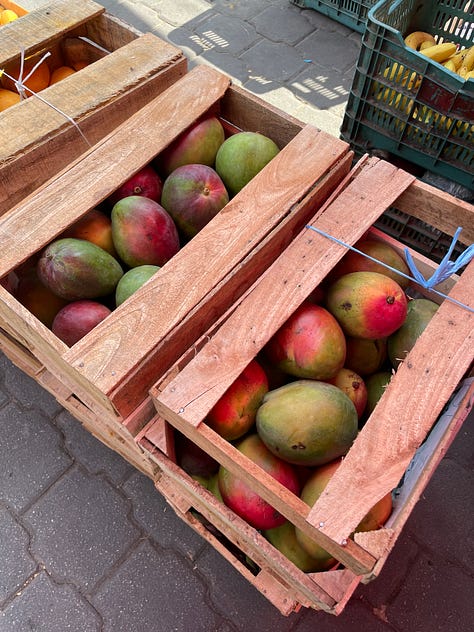
The selection of produce at the Etla market can be quite interesting. Some things are standard: garlic, limes, cilantro, mint, and parsley, potatoes, onions, and tomatoes. Fresh chiles are always available but typically only four varieties: poblanos, jalapeños, Serranos, and chiles de agua, an heirloom native to Oaxaca. Sometimes produce will be pre-bagged with the price labeled in marker on the outside of the plastic bag, although I learned those bags are a trap, and invariably a significant proportion of the produce will be either overripe or underripe.
When it’s in season we’ll also get a lot of citrus, as well as more unusual stuff like gooseberries (seen in the collage above). You can always find mangos and apples, but much like in the United States you’d do better not to buy them out of season. We’re in mango season right now and markets are flooded with small, fist-sized varieties that ripen incredibly fast and have unparalleled flavor. But off season you’ll find the Tommy Atkins variety, pictured here in wooden crates. Tommy Atkins mangos are what you’ll most often find in the U.S. and are awful, bred for size, appearance, and shelf-stability, at the sacrifice of…well, everything else. They’re incredibly stringy, their flavor is pathetic, and the flesh can be woody. Apples in Oaxaca often have U.S.-style supermarket stickers on them, meaning they’re not local. Even at the farmer’s market in our small corner of Oaxaca you can find crappy, out-of-season GMO fruit.
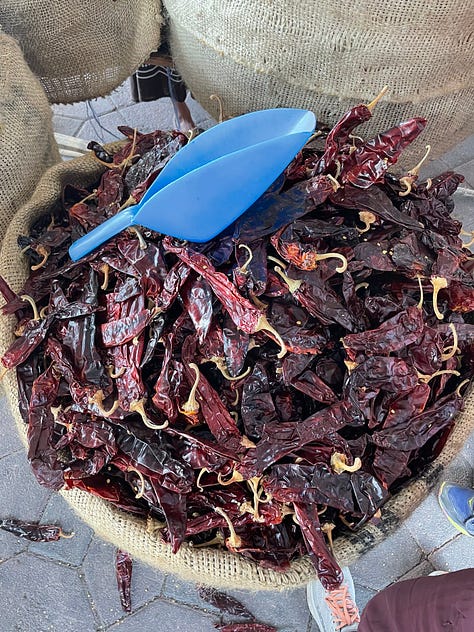
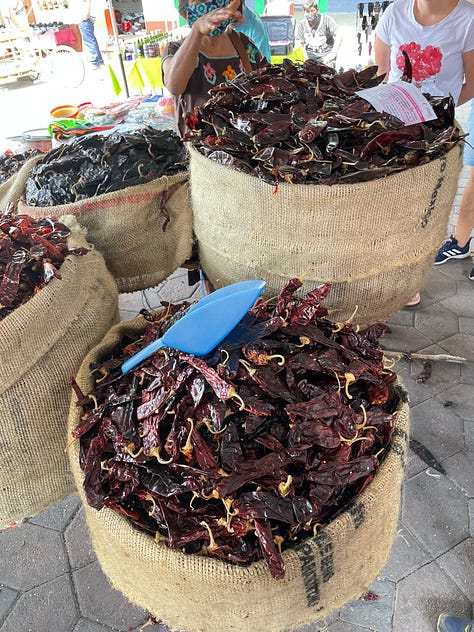

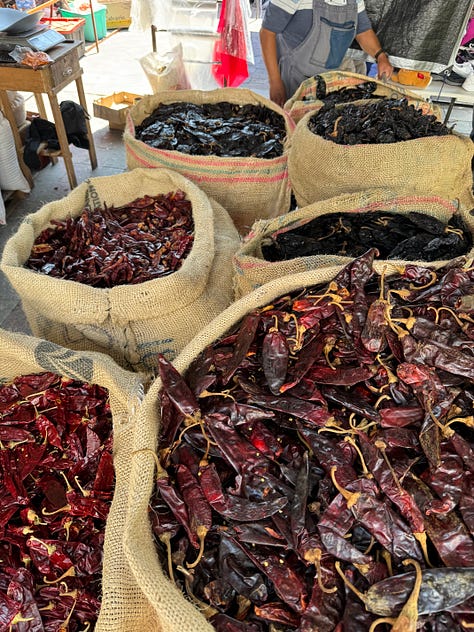


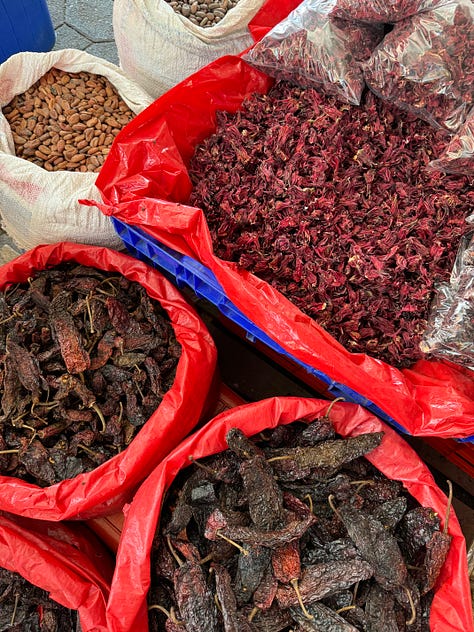

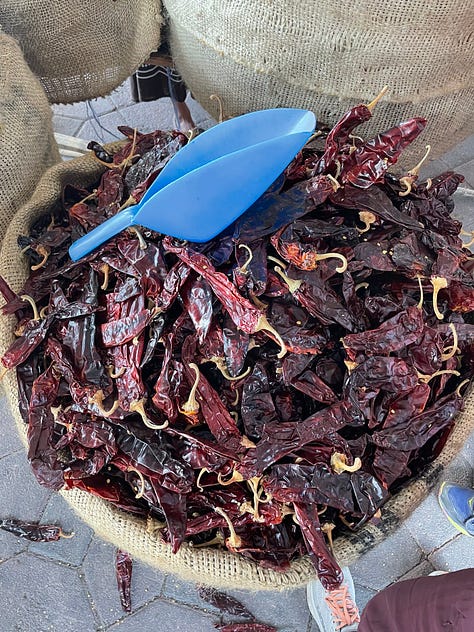
The Etla market very much reflects both the local ecology and eating habits of Oaxaca. There are, of course, plenty of dried chiles for sale, including varieties you wouldn’t expect. The bottom right image of this collage shows peppers which the vendor swore to me are “paprika,” and which he said has no other name in Spanish. The Etla market also carries cacao beans, coffee beans (roasted and unroasted), and Mexico’s local sugar, panela, which is cone-shaped thanks to the wooden molds used to make it. Both cacao and coffee are locally grown and roasted, just a few hours from where we live.
I continue to be a bit intimidated by the market, but it’s also a must-have experience when visiting.





In Merida the Lucas de Galvez mercado takes up an entire city block and the availability and variety of produce and so much more sounds like your wonderful mercado in Oaxaca. Mexican markets are so amazing! Famous chef David Sterling (RIP) even took Martha Stewart there for one of her shows. I love Mexican markets as you can find anything at them. Great post.
Ah, there is an excellent book called Mercados by David Sterling, which I really enjoyed reading, but you probably already know about it.